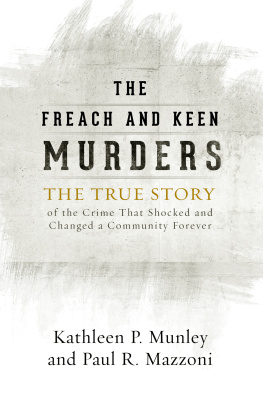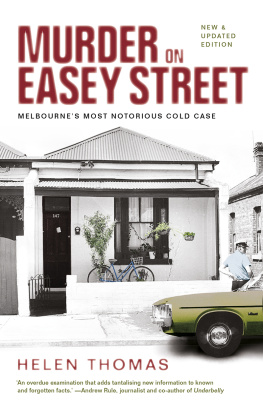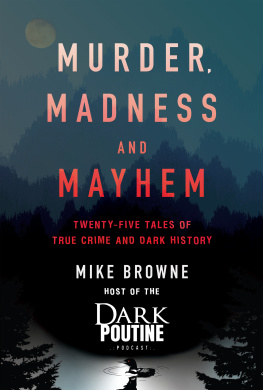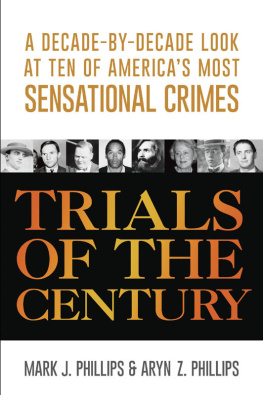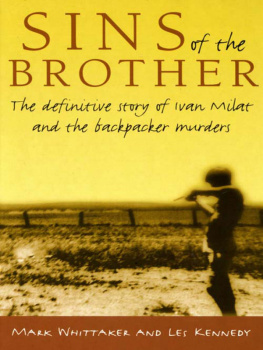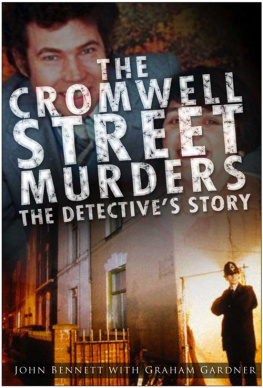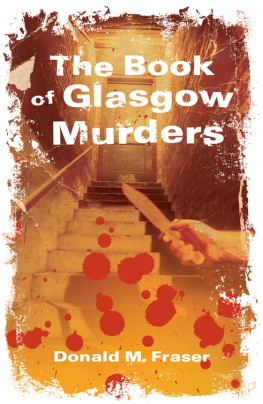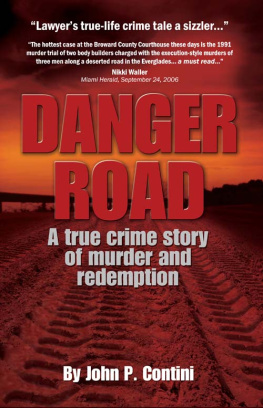Alannah Hopkin - The Ship of Seven Murders. A True Story of Madness & Murder
Here you can read online Alannah Hopkin - The Ship of Seven Murders. A True Story of Madness & Murder full text of the book (entire story) in english for free. Download pdf and epub, get meaning, cover and reviews about this ebook. year: 2010, publisher: ePub Direct;The Collins Press, genre: Adventure. Description of the work, (preface) as well as reviews are available. Best literature library LitArk.com created for fans of good reading and offers a wide selection of genres:
Romance novel
Science fiction
Adventure
Detective
Science
History
Home and family
Prose
Art
Politics
Computer
Non-fiction
Religion
Business
Children
Humor
Choose a favorite category and find really read worthwhile books. Enjoy immersion in the world of imagination, feel the emotions of the characters or learn something new for yourself, make an fascinating discovery.

- Book:The Ship of Seven Murders. A True Story of Madness & Murder
- Author:
- Publisher:ePub Direct;The Collins Press
- Genre:
- Year:2010
- Rating:3 / 5
- Favourites:Add to favourites
- Your mark:
- 60
- 1
- 2
- 3
- 4
- 5
The Ship of Seven Murders. A True Story of Madness & Murder: summary, description and annotation
We offer to read an annotation, description, summary or preface (depends on what the author of the book "The Ship of Seven Murders. A True Story of Madness & Murder" wrote himself). If you haven't found the necessary information about the book — write in the comments, we will try to find it.
In 1828, theMary Russell sailed into Cork Harbour from the West Indies. Seven crewmen lay in the main saloon, brutally murdered by the captain. His trial was a sensation as survivors revealed a tale of danger and delusion. But what really happened? This gripping account unravels the bizarre tragedy and its dramatic court case, as well as the place it occupies in history and folklore.
The Ship of Seven Murders. A True Story of Madness & Murder — read online for free the complete book (whole text) full work
Below is the text of the book, divided by pages. System saving the place of the last page read, allows you to conveniently read the book "The Ship of Seven Murders. A True Story of Madness & Murder" online for free, without having to search again every time where you left off. Put a bookmark, and you can go to the page where you finished reading at any time.
Font size:
Interval:
Bookmark:
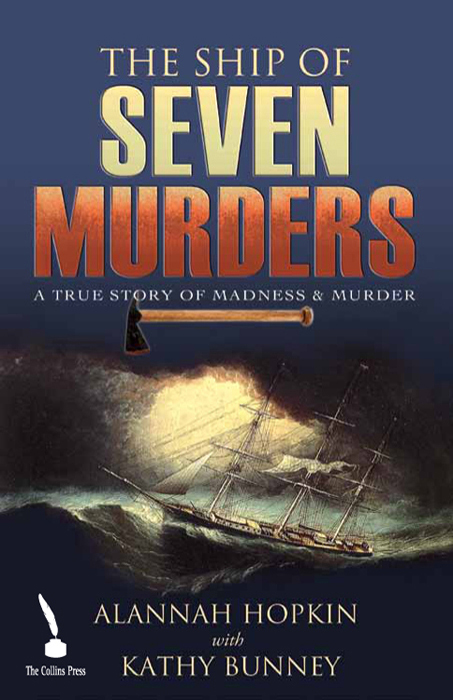
THE SHIP OF
SEVEN
MURDERS
A TRUE STORY OF MADNESS & MURDERS
ALANNAH HOPKIN
with
KATHY BUNNEY

The Collins Press
I n the late evening of 25 June 1828, the keepers of the light at Roches Point saw two square-rigged ships on the horizon, sailing together towards the entrance of Cork Harbour. At nine in the evening there was still light in the sky, the sun slowly sinking towards a dusky pink horizon behind the new arrivals. A swift pilot cutter set out from Roberts Cove, expertly intercepting the boats. From the shore it looked like a routine homecoming, another of the hundreds of voyages each year to and from this busy harbour.
The keepers at the lighthouse identified one of the ships as the Mary Russell, ex-Cove, returning from a voyage to the West Indies. They were not familiar with her sailing companion, the Mary Stubbs of New Brunswick in British North America, but that was not surprising. The sheltered waters of Cork Harbour, and its strategic location on the southwest coast of Ireland, made it the landfall of choice for many ships that crossed the Atlantic or made the six-month-long journey from Australia. In Cork, then under British jurisdiction, they could top up their water after the long sea crossing, replenish food supplies, and send news of their safe arrival to their owners in London, Liverpool or Bristol. Then they would await orders for their next destination to unload their cargo.
The two boats hove to when they were intercepted by the pilot, who jumped aboard with an agility honed by years of practice and climbed up the steep side of the Mary Stubbs as directed by the ships captain. Captain Callendar explained that the Mary Russell was under the command of three of his sailors, and would follow them in.
As the pilot guided the two boats past the twin headlands, the sailors all felt the sudden ceasing of the ocean swell that marked their entrance into the calm waters of the wide harbour, Statio Bene Fida Carinis (A Good Safe Harbour for Ships), as the motto states. The two men and four boys who had set off from Cork aboard the Mary Russell, bowed their heads at the familiar calming of the waters, and made the sign of the cross, giving thanks to God for their safe homecoming. They looked with wonder and relief at the green wooded hills of the familiar shoreline, a sight they had never expected to see again. The pilot guided the boats past Spike Island and Haulbowline Island into the channel beside little town of Cove, where the Mary Stubbs dropped anchor; the Mary Russell hove to, and followed suit. Then the sailors tied on fenders and lashed the boats to each other, so that they lay rafted together, exactly as they had done six weeks ago in Barbados, their last port of call.
Leaving Barbados on 9 May, the Mary Russell had been a happy ship, heading home on a profitable voyage, her hold full of hides and prime Barbados sugar. Her captain, William Stewart, was an experienced mariner, known for his humanity and kindness, sailing with a small but able crew. This consisted of chief and second mate, a carpenter, three able-bodied seamen and three apprentice boys, travelling with four passengers: three men and an unaccompanied eleven-year-old boy in delicate health.
But instead of a high-spirited homecoming, they arrived in stunned silence. Their captain was not on board, and seven men lay brutally murdered in the main saloon. They had been tied up, hands and feet, then pinioned to the floor with more ropes, and violently killed by savage blows to the head. The floor was still sticky from the copious amounts of blood that had flowed from their bodies. It was four days since they had been killed, and the stench from the putrefying remains hung like a pall above the ship. The pilot on the accompanying schooner heard the story of the carnage from the only survivors of the voyage, four boys and two severely wounded seamen, as he piloted the Mary Stubbs to her anchorage. Curiosity compelled him to board the Mary Russell alongside, to see the bloody corpses with his own eyes. A seasoned mariner who had witnessed shipwreck and murderous bar-room brawls, he was shocked to the core by the brutal massacre that he glimpsed through the broken skylight of the Mary Russells main saloon. He too made the sign of the cross, as was customary in the presence of the dead, and said a silent prayer. Meanwhile, the sickly slaughterhouse smell gently wafted shorewards in a light southerly breeze on that late summer evening.
The news spread quickly among the shebeens and whorehouses of the Holy Ground on Coves seafront, travelling up its hilly slopes to the more salubrious streets inhabited by ship owners and sea captains, including Captain Stewart. Here his wife, Betsy, together with her four small children, had watched from the window every morning and evening for the past month, hoping that her husband would be home in time for the birth of their fifth child, due any day now. William Stewart was a loving husband, devoted to his children, a respected member of the local community, regarded as a kindly sea captain, popular with ship owners and crewmen alike. By the time the Mary Russell reached Cove, Betsy and the children were fast asleep, and nobody dared to wake her with the news. Word spread like wildfire along the waterfront, then up and down the hills of the small town: Captain Stewart was not with his ship; he had jumped overboard near Cape Clear, after murdering seven of his people. The names were familiar to many who heard them: William Swanson, John Cramer, Francis Sullivan, John Keating, James Raynes, Timothy Connell and James Morley. Seven families received tragic news, more shocking than any dreadful fate they had ever imagined for their loved ones, far away at sea. The Mary Russell at once became known as the ship of seven murders, but nobody yet knew why seven men had been murdered.
The next morning, a bright, sunny day, Reverend William Scoresby and his brother-in-law Colonel Fitzgerald were being rowed across Cork Harbour from Corkbegg to Cove, where Fitzgerald, a magistrate, had an appointment. The Reverend William Scoresby, Fellow of the Royal Society and Chaplain of the Mariners Church, Liverpool, had been married to Fitzgeralds sister, Elizabeth, in Aghada, near her home, by the Bishop of Cloyne on 20 May. He was on an extended visit to her familys waterside estate. Scoresby, originally from Whitby, was a distinguished seafarer and scientist, famed as an explorer of the Arctic regions, who had retired from the sea four years earlier, shortly after his first wifes death, to take Holy Orders. His new wifes childhood home, an extensive demesne on the inland side of Roches Point, pleased him greatly. A naturally curious man, and a highly observant note-taker, interested in everything, especially things nautical and scientific, he was enjoying the wide sweep of water between Corkbegg and Cove, with its low-lying islands and the busy variety of waterborne craft, when a fellow passenger pointed out the ship of seven murders. This is Scoresbys account of that fateful day:
About twelve hours after the arrival of the vessel [the Mary Russell], in port being myself on a visit at Corkbegg, on the harbour of Cork, at the time, I happened to be crossing the water to Cove, when a gentleman in the boat, pointing to a brig at anchor, remarked, that that, he believed, was the vessel of which the crew was reported to be murdered. Such an intimation, of course, produced an intense and painful desire to ascertain the fact. After landing one of the party, a lady, at her destination near Cove, we returned with excited, anxious and incredulous feelings, towards the anchorage. The rippled water reflected the bright rays of an unclouded sun in playful sparklings, and there was nothing in outward nature accordant with a scene of blood; neither was there anything in the external appearance of the vessel calculated either to indicate mortal conflict, or to justify the rumour which we had heard. One solitary man, like an Officer of Customs, was seen pacing in ordinary form and step the starboard side of the deck. We hailed, as we approached the gangway; and, too much excited to speak in measured words, abruptly asked Whether a murder had been committed there? The answer of the person in charge was prompt and accordant, It is too true; and here they are, all lying dead! On ascending the deck we were pointed aft to the cabin skylight, where a scene of carnage so appalling was exhibited, as to tender, by sympathy, association and memory combined, the impression indelible. Whilst contemplating the dreadful spectacle two boys, who had been witnesses of all its circumstance, made their appearance, and freely communicated the leading particulars of the sanguinary transaction.
Font size:
Interval:
Bookmark:
Similar books «The Ship of Seven Murders. A True Story of Madness & Murder»
Look at similar books to The Ship of Seven Murders. A True Story of Madness & Murder. We have selected literature similar in name and meaning in the hope of providing readers with more options to find new, interesting, not yet read works.
Discussion, reviews of the book The Ship of Seven Murders. A True Story of Madness & Murder and just readers' own opinions. Leave your comments, write what you think about the work, its meaning or the main characters. Specify what exactly you liked and what you didn't like, and why you think so.



